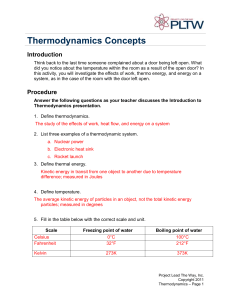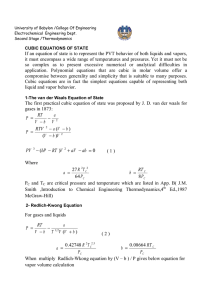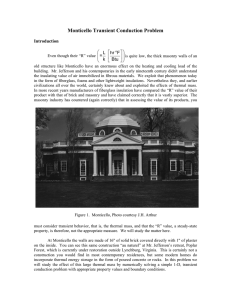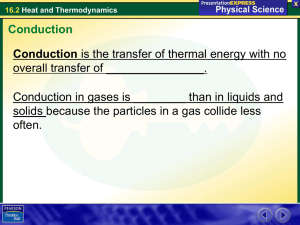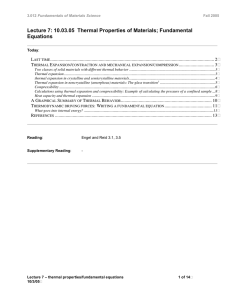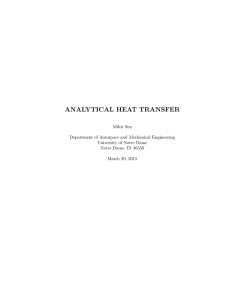Document 10587785
advertisement
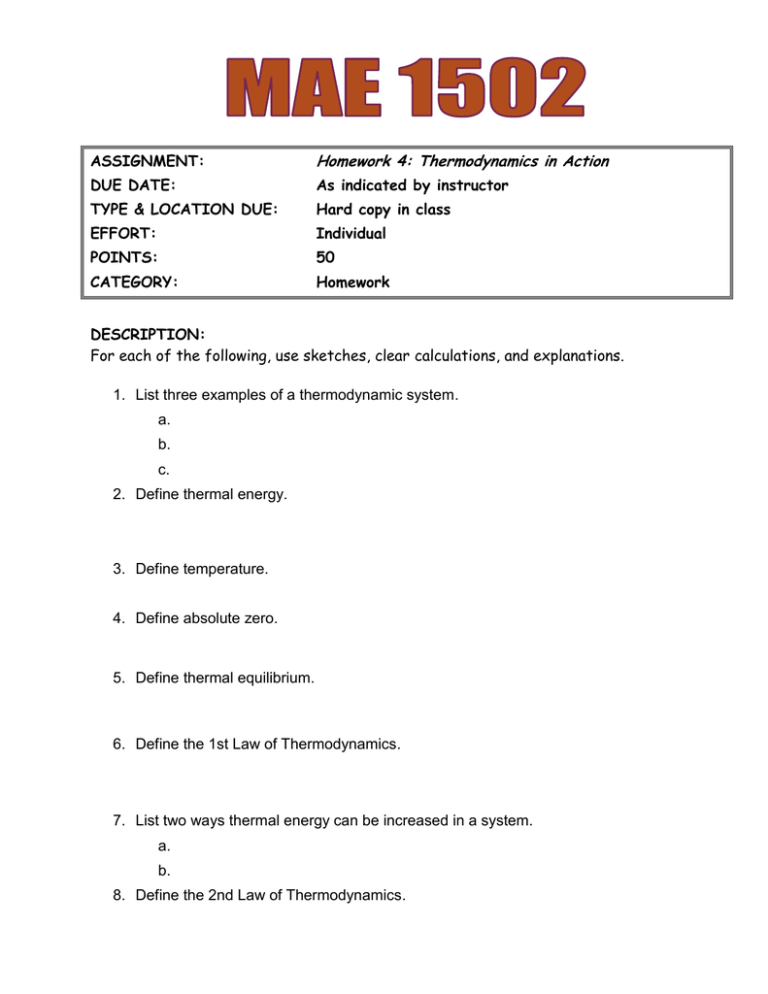
ASSIGNMENT: Homework 4: Thermodynamics in Action DUE DATE: As indicated by instructor TYPE & LOCATION DUE: Hard copy in class EFFORT: Individual POINTS: 50 CATEGORY: Homework DESCRIPTION: For each of the following, use sketches, clear calculations, and explanations. 1. List three examples of a thermodynamic system. a. b. c. 2. Define thermal energy. 3. Define temperature. 4. Define absolute zero. 5. Define thermal equilibrium. 6. Define the 1st Law of Thermodynamics. 7. List two ways thermal energy can be increased in a system. a. b. 8. Define the 2nd Law of Thermodynamics. 9. Define entropy. 10. Define convection. 11. List two examples of convection. a. b. 12. Define conduction. 13. List two examples of conduction. a. b. Energy Equations: Q = m c ΔT 14. Define the following variables. Q= m= c= P= Δt = ΔT = P= Q Δt (15 – 19) A 1.00kg piece of aluminum metal at 90.0°C is placed in 4.00 liters (=4.00 kg) of water at 25.0°C. Determine the final temperature (Tf). 15. List all known values. 16. List all unknown values. 17. Select equations. 18. Apply known values. 19. Solve. (20 - 24) A 3/16 in. thick acrylic testing box with dimensions of 10.0 in. x 10.0 in. is covered with an unknown 0.50 in. insulation material. Determine the thermal conductivity for the insulating material if a 25.0W bulb is used to heat the box. The bulb maintains the inside temperature at 10.0ºC higher than the outside temperature. 20. List all known values. 21. List all unknown values. 22. Select equations. 23. Apply known values. 24. Solve. 25. List two examples of radiation. a. b. (26 - 30) A student travels on a school bus in the middle of winter from home to school. The school bus temperature is 58.0° F. The student’s skin temperature is 91.4° F. Determine the net energy transfer from the student’s body during the 20.00 min ride to school due to electromagnetic radiation. Note: Skin emissivity is 0.90, and the surface area of the student is 1.50m2. 26. List all known values. 27. List all unknown values. 28. Select equations. 29. Apply known values to equations. 30. Solve.



